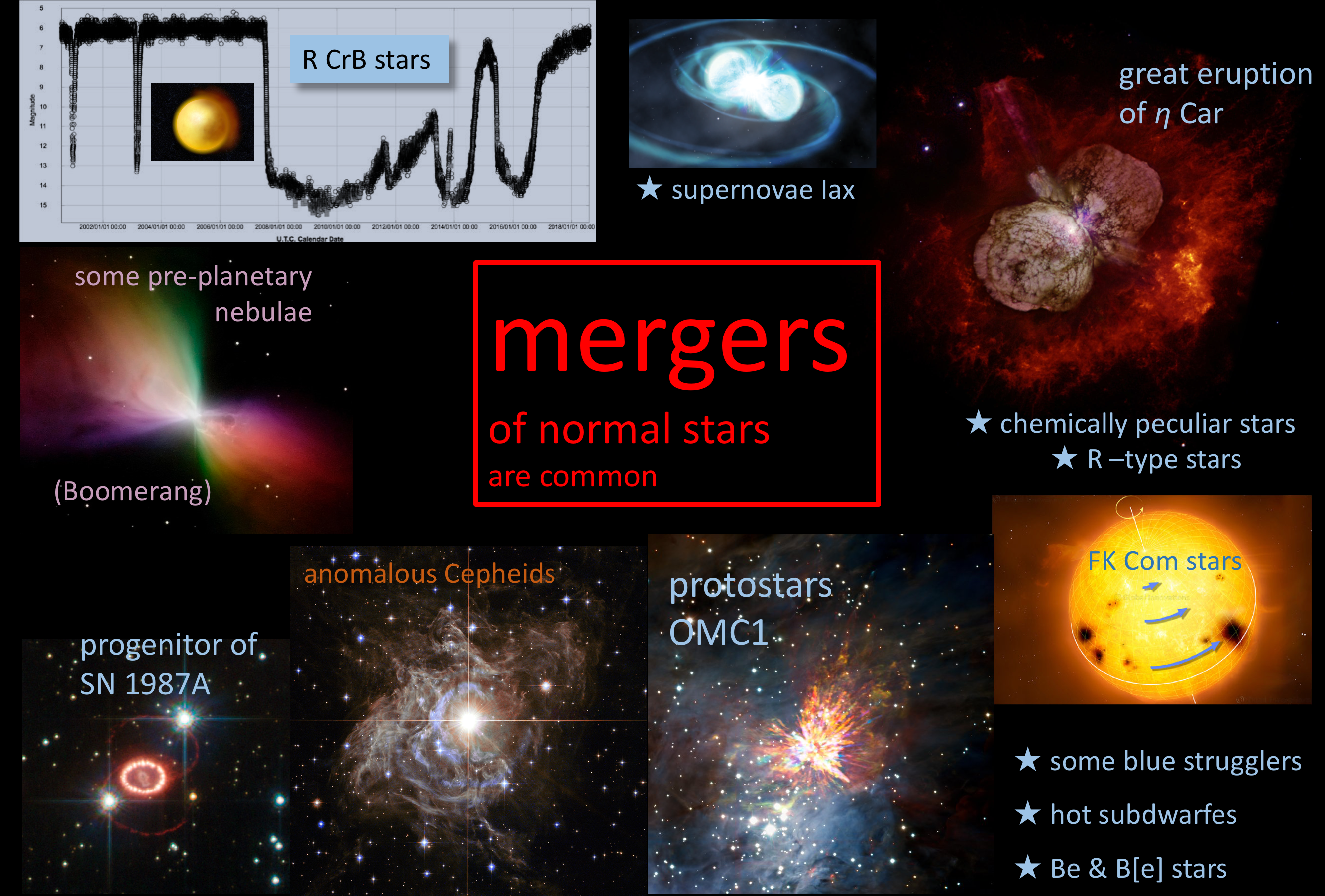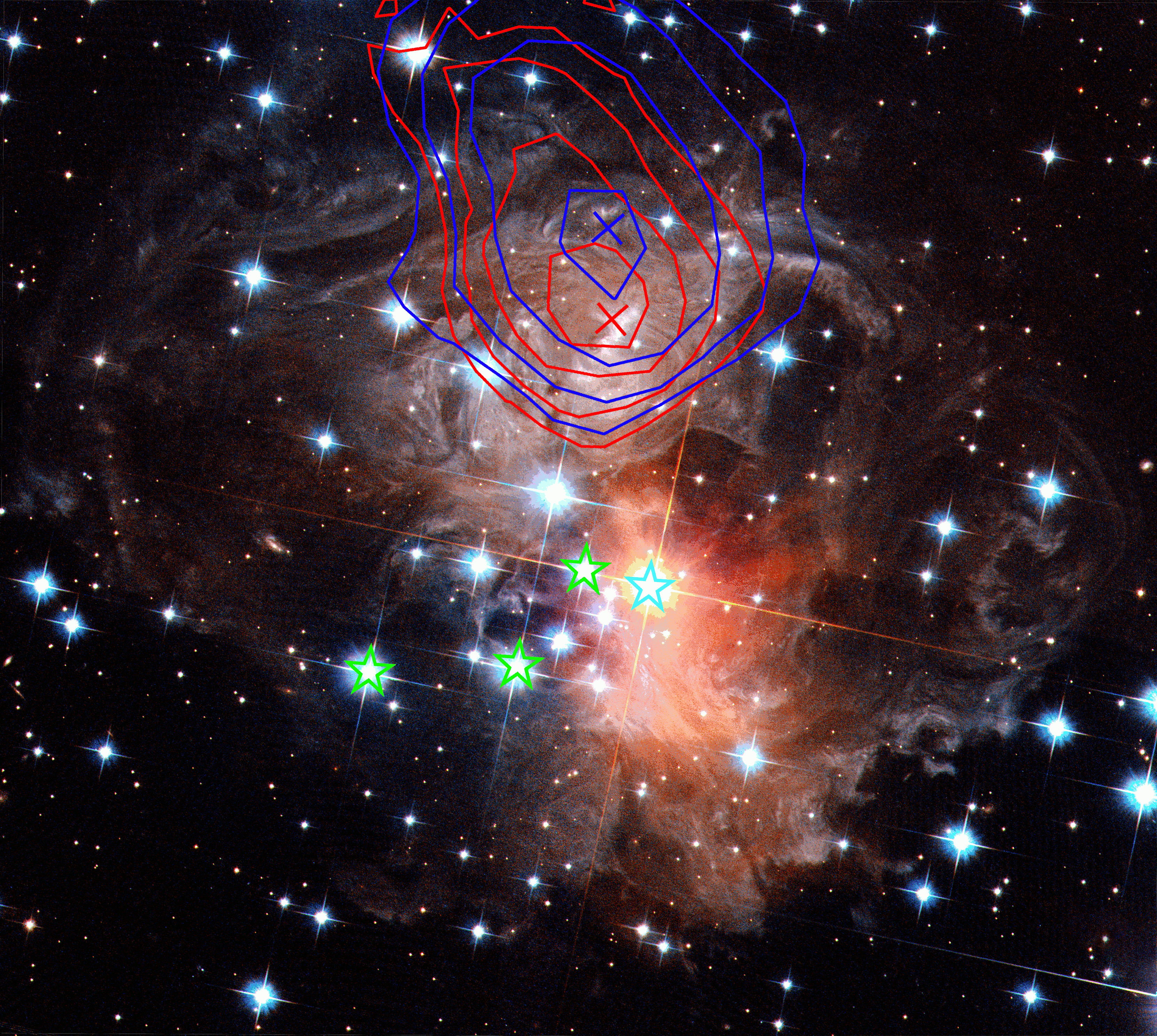Project MERGESTARS
Project summary (PI: T. Kamiński): We propose to establish a new group of young researchers in Toruń to study the physics governing stellar mergers. The studies will be performed through observations of a group of stellar-merger products, red novae, and using novel interferometric techniques.
Research project objectives
Stellar mergers have been long thought to happen at different phases of stellar evolution, in binary systems and in dense stellar clusters. While massive compact objects such as black-hole or neutron-star pairs can be driven into a merger through emission of gravitational waves, less compact stars -- such as main sequence stars, stars on the red giant or asymptotic giant branch, and white dwarfs -- can collide and subsequently coalesce owing to other mechanisms acting at much shorter time scales. The mechanisms responsible for collisions of normal stars are however poorly understood and are currently under intensive investigation. All those systems are expected to go through the common envelope phase, which is particularly difficult to model with a wide range of simulation methods. The existing models provide different predictions for the common envelope evolution, the merger event, and collision products. For instance, it is not certain where the angular momentum of a former binary is stored after the merger -- is it deposited in the star or in the dispersed material? A formation of disks, tori, spiral patterns, and jets has been predicted but the simulations do not seem to agree on the causes and results of stellar mergers. We propose to investigate the physics of stellar mergers by observational studies of merger products at best angular resolutions accessible to modern astronomy.
Research project methodology
We propose to investigate the physics of stellar collisions through studies of red novae. They have been recently recognized as a group of optical transients that erupt in a merger event. That red novae are manifestations of stellar collisions has been very convincingly proven by observations of a red nova of 2008, V1309 Sco; it was seen years before its eruption as a spiraling-in binary. We propose to study the remnants of five Galactic red novae that are now years, decades, and centuries after their respective eruptions. We plan to study the stars formed in those mergers and, more importantly, trace their circumstellar material. We particularly aim at tracing the angular momentum in the different components of the remnants. The observations will be directly compared to theoretical models, including the search and full characterization of the anticipated structures (jets, disks, outflows, etc).
After the outburst, all red novae cool down to very low temperatures and produce a significant amount of molecular gas and dust that is particularly easy to study at infrared and submillimeter wavelengths: the cool dust has spectral energy distribution peaking in the infrared and cool molecular gas can be comprehensively studied through rotational and ro-vibrational transitions that are located mainly at infrared (IR) and submillimeter wavelengths. Although we will attempt intensive studies of all red novae at all accessible wavelengths, we will put a special emphasis on interferometric observations at IR and submillimeter regimes because, since very recently, these techniques offer unprecedented angular resolutions. We plan to use three new generation interferometers: ALMA, Gravity, and Matisse. ALMA operates at (sub-)millimeter wavelengths and will allow us to resolve the dust and gas of red nova remnants at an angular resolution of ~30 mas and will provide full information on gas kinematics. Gravity and Matisse have been newly installed on ESO's Very Large Telescope Interferometer and operate at near- and mid-IR wavelengths, respectively. Gravity will give us a glimpse into the remnants at the 2-4 mas resolution and Matisse will allow us to study the distribution and chemical composition of dust in red novae at an unprecedented detail. Pilot projects have been already obtained to demonstrate that our adopted observation techniques are adequate to study red novae. We plan to analyze the data with existing radiative-transfer tools. In the quest for measuring angular momenta in the merger remnants, we will follow methodologies developed for well-studied proto-stars and pre-planetary nebulae.

Expected impact of the research project on the development of science
We plan to investigate red novae as a group and provide their characteristics that will allow us to identify new transients of this type and search for overlooked historical red-nova events. Since red novae are relatively common -- for instance in Milky Way they are more common than supernova -- their role in the Galactic chemical evolution may be understated (e.g. they may provide radioactive nuclides of 26Al and they may explain some of the presolar grains). Shedding light on the physics of the common envelope systems and their mergers will allow us to understand better binary evolution in general and will have implications for stellar populations studies. Although red novae appear to represent low-mass stars, some physical mechanism responsible for their mergers may help explain their more massive analogs, including phenomena like eta Car or progenitors of the LIGO black hole binaries.
